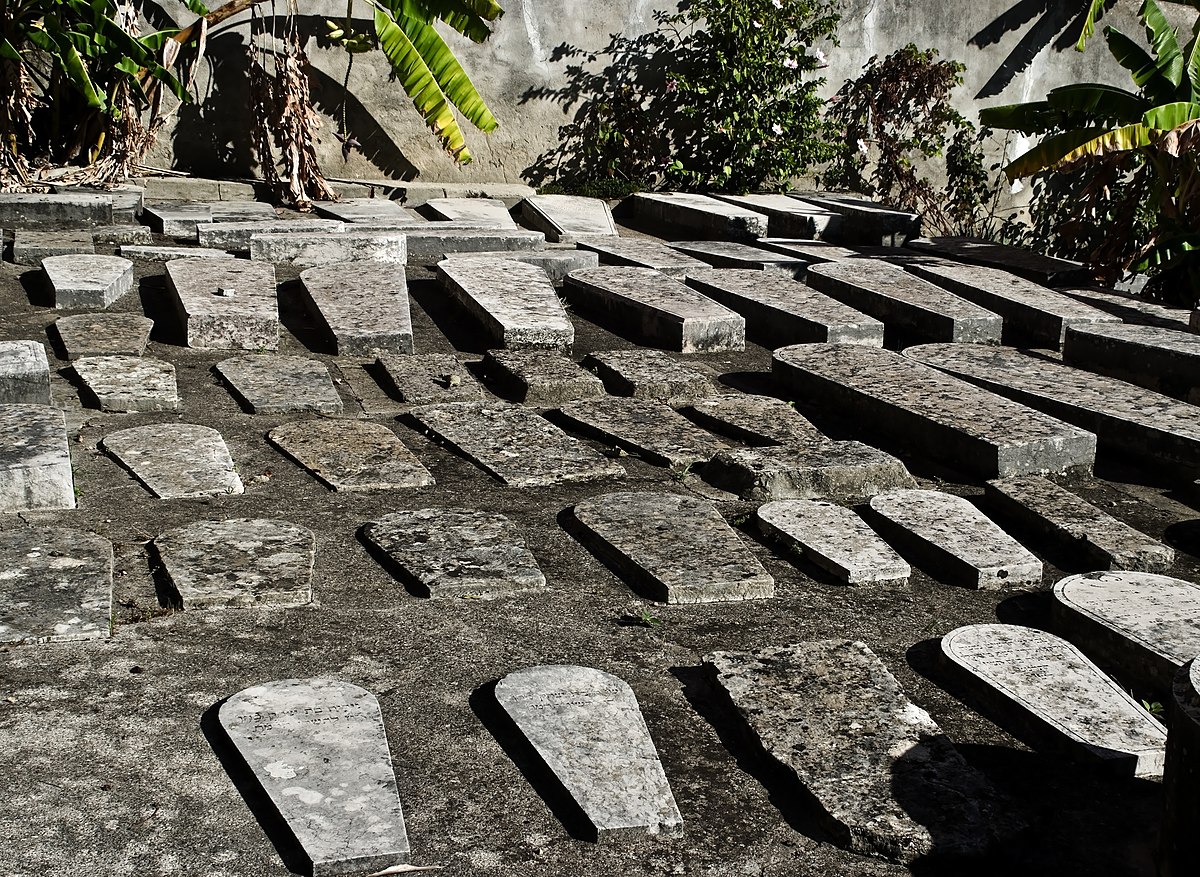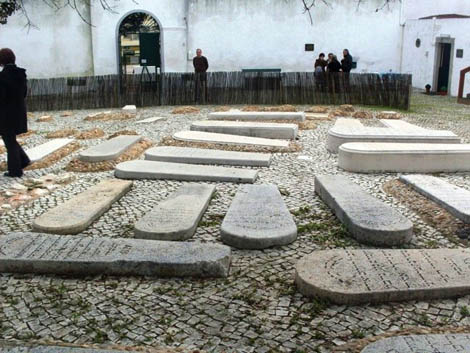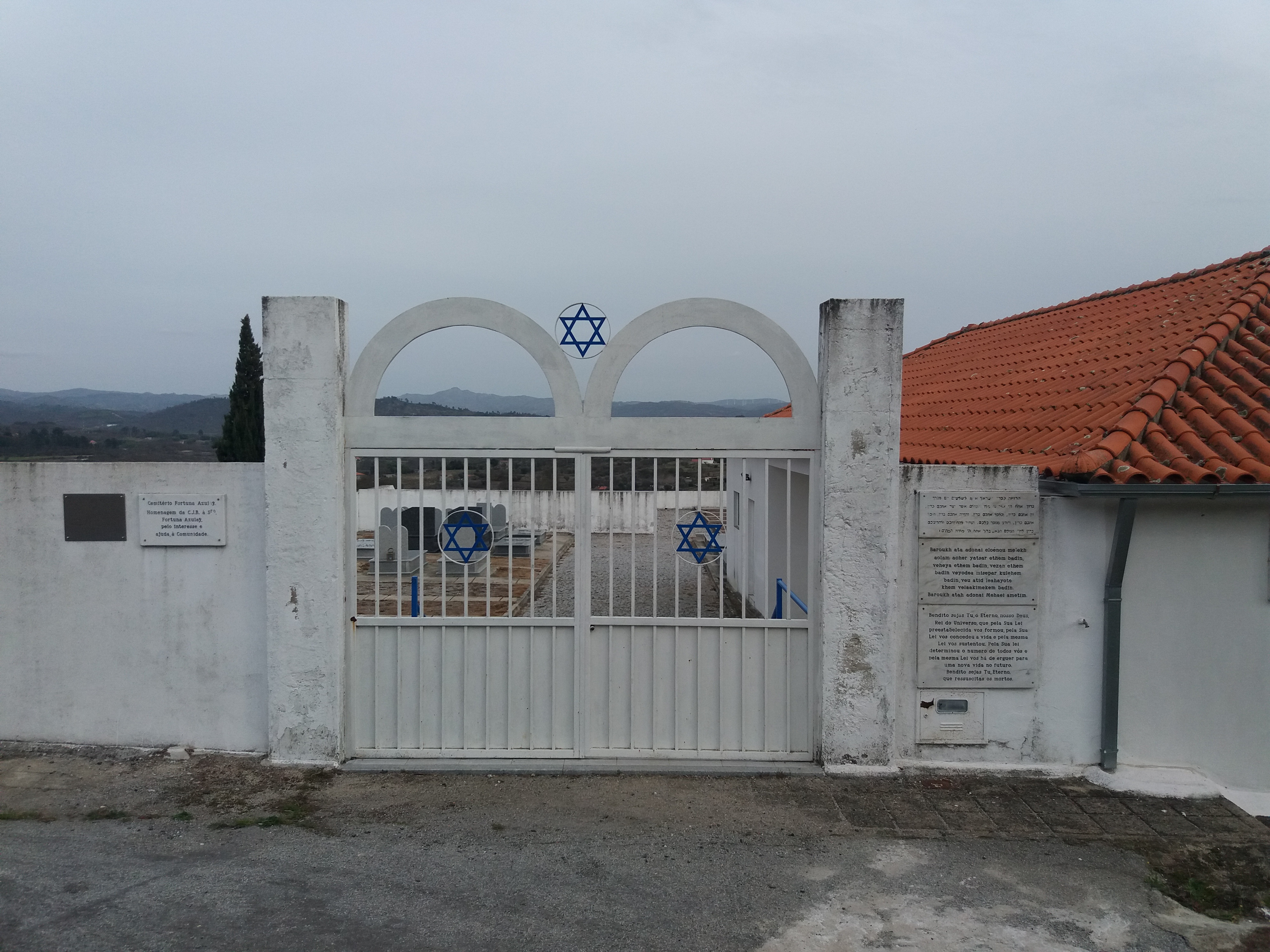In the early 19th century, descendants of Sephardi Jews who had taken refuge in Morocco and Gibraltar, returned to Portugal. In 1801, they bought a plot in Estrela English Cemetery in Lisbon. The last burial there took place on 23 November 1869. Years earlier, having foreseen the lack of burial space in the small plot at Estrela cemetery, the Jewish Community of Lisbon took out a public subscription to buy a new cemetery. On 30 March 1865, a piece of land was bought for 600 escudos at Alto de São João through a public deed enacted by Notary Scola. The president of Guimiluth was Hassadim Moisés Anahory and the president of the Council of Ministers was the Bishop of Viseu, who granted the necessary permits for burials to be performed. Three years later, in 1868, a royal decree by King D. Luís granted: “the Jews of Lisbon permission to install a cemetery to bury their co-religionaries”, located in Calçada das Lajes, now Avenida Afonso III, the only burial ground still active in Lisbon. The land was bought by members of the future Jewish Community of Lisbon. Much later, under the presidency of Samuel Levy, the cemetery was enlarged, after Lisbon City Council had assigned a small strip of land for burials.
On the outer wall of the taharah we see the name Alice Buzaglo Seruya immortalised by her children who in her honour paid for repairs to the cemetery houses. In this burial ground, the ancestral history of the community can be told through the last names of those lying in epitaphs carved with great beauty and dignity. Among others who are in repose there we find the names Seruya, Azancot, Levy, Anahory, Abecassis, Buzaglo and Amzalak. Moses Bensabat Amzalak, president of the Jewish Community of Lisbon between 1927 and 1978, treated death as he had life: with wisdom and respect. Only a wise person benefits from the desire to embrace eternity with the arms of justice: by his express will, his grave is located in the suicides’ corner.
The reason that led him to take this firm decision, one previously taken by members of his family, dates back to a controversy at the heart of the Jewish community of Lisbon involving the sudden death of a seventeen-year old girl about to convert to Judaism. Rachel Saragga, born on 15 November 1883, was the daughter of José Bensabat Saragga, a distant relation of Moses Amzalak’s mother. The opinion of the head of Chevra Kadishah was peremptory: although not yet officially a Jew, there was no option for the girl than to be buried in the area reserved for those who chose to die of their own free will, by committing suicide. Although the community leader of the time, Isaac Levy, (father-in-law to Moses Amzalak’s sister Helena) disagreed and vehemently defended that Rachel Saragga should be buried like any member without discrimination, he also said that if they did not agree with him, he himself would be buried there, which he was. Rachel Saragga was buried in the corner of the souls who transgressed the metaphor “God gives and God takes away”.
The story of the Jewish Community of Oporto can also be told through the graves of its co-religionaries. As there was then no Jewish cemetery in Oporto, many Jews from the northern city became members of the Jewish Community of Lisbon to be buried in the Jewish cemetery in Lisbon.
Fleeing the pogroms of Europe and antisemitism, Polish and German Jews found a safe haven in Lisbon to restart their life. The mark of Shoah is on the grave of Gabriel Reish, a survivor of Dachau, who came to Lisbon to live.

The blind of Lisbon at the Jewish Cemetery, where they were to pay tribute to the memory of Martin Sain
In this cemetery, or Beit Hahayim, which translated tries to confirm that man’s time does not expire on the day of his burial, lies Martin Sain. He was Jewish, born in 1884 in Bucharest, who lived in Paris and then settled in Portugal. Here, he founded Sacor and the Raquel e Martin Sain Foundation, whose object is to educate and employ the blind, giving them the possibility of paid work, as well as other altruistic purposes of a charitable, educational, cultural or scientific nature, linked to the situation of the blind in Portugal. Two years after his death, the newspaper O Século, in its issue of 2 February 1964, wrote: "The Lisbon blind visit the Jewish cemetery to pay homage to the memory of their benefactor, Martin Sain”.




